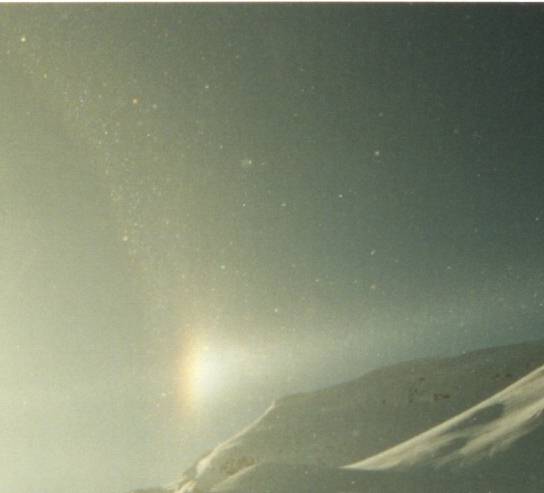- Crystal orientation:
- rotate plates
- Path of light:
- 3-7
- Occurrence:
- rarely
ca. once a year
EE 14/15

Description:
Lowitz arcs are short arcs showing pale colours, which extend diagonally upward and downward from the parhelia to the 22°-halo. They are visible at just very few occasions. The halo is called Lowitz Arc because Thomas Lowitz was the first who observed and described these arcs in 1794 at St. Petersburg.
Formation:

The diagram on the right shows a plate-shaped crystal rotating completely around its axis.
These rotating plates generate the upper and lower Lowitz arcs.
Diagram taken from MM3/96.
The way how Lowitz arcs are formed is disputed The current theory supposes that the arcs are caused by rotating plate-shaped ice crystals. In these crystals, the axis of rotation stretches between two opposite points of the base face. The 1ight path is the same like the one causing the parhelia. The light enters one prism face and leaves the next but one. But it is questionable if it is possible that crystals can orientate like this. According to another opinion (Tape) the Lowitz arcs are nothing more than parts of the lower Parry arc. At high sun elevations a lower Parry arc can arise, which lies a bit below the 22°-halo and the branches of which can extend up to the parhelic circle. Parry-orientated column-shaped crystals, however, also cause a considerable number of other halos which then should appear together with the Lowitz arcs. But there are only very few cases these halos were observed together with Lowitz arcs. Instead of this, Lowitz arcs appear together with parhelia, which as we know - are caused by plate-shaped crystals. So there is every reason to believe that Lowitz arcs are caused by rotating plate-shaped crystals. But to certify this, further observations will be necessary.


